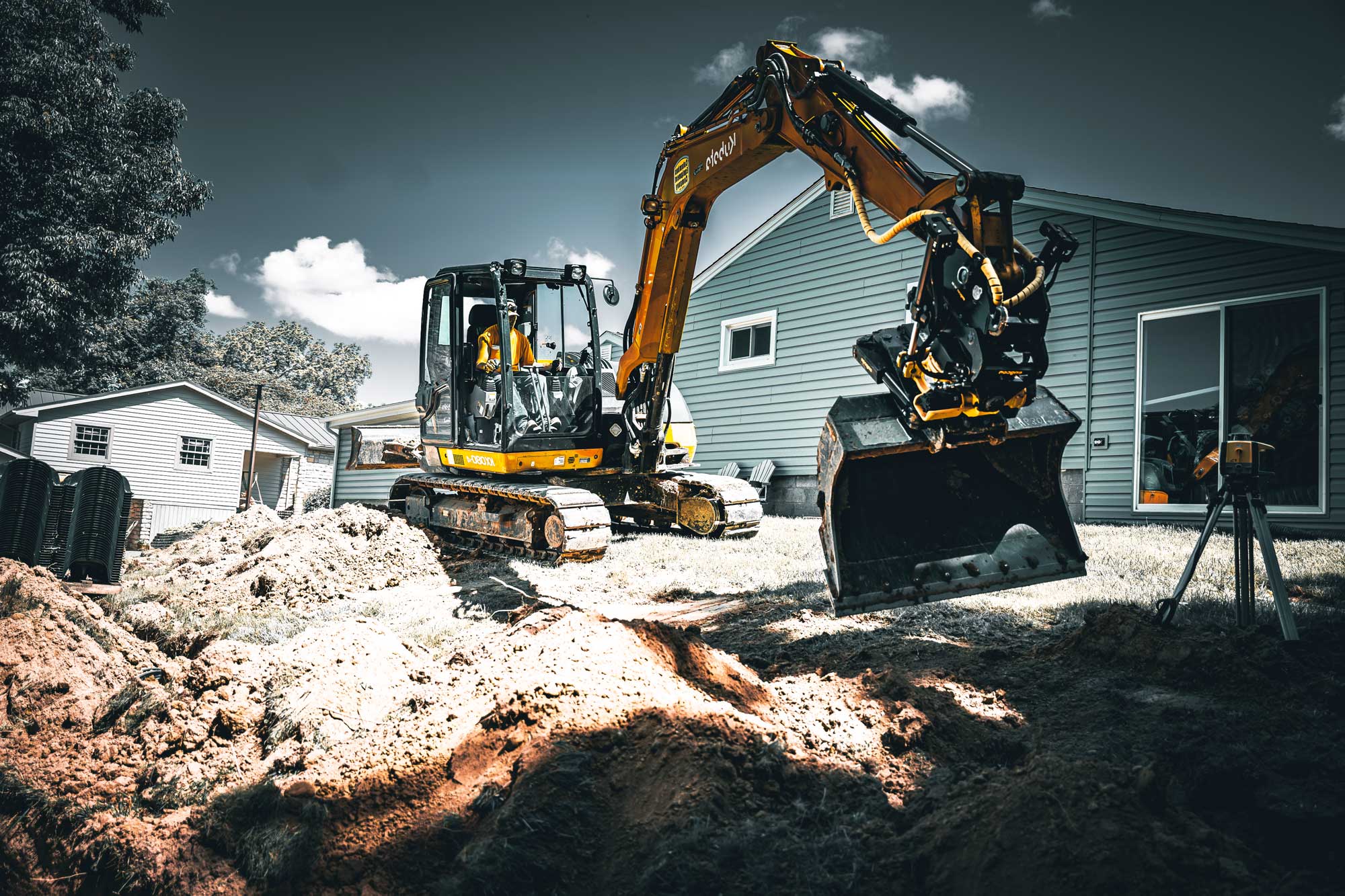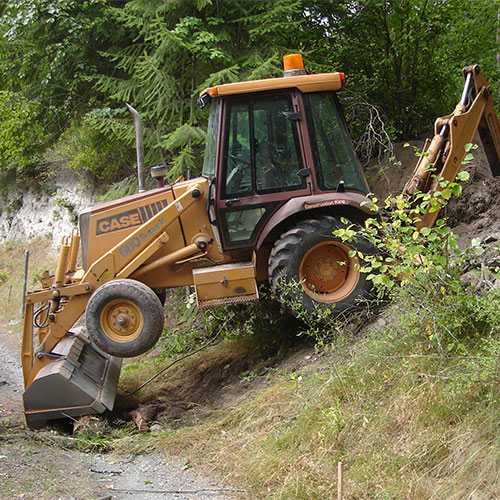Residential Excavating Ohio - Specialized Excavation for Ohio Homes
Residential Excavating Ohio - Specialized Excavation for Ohio Homes
Blog Article
Revealing the Art of Excavation: Pro Tips for Safe and Productive Digging
In the world of excavation, the proficiency of risk-free and effective digging is an art type that needs adherence, knowledge, and precision to established methods. As soil is turned and earth is relocated, the complexities of excavation reveal themselves, requiring a keen understanding of devices, soil composition, security protocols, and environmental considerations. The proficiency required to navigate these aspects successfully can mean the distinction between an effective excavation task and a prospective disaster. By deciphering the layers of this detailed process, a globe of strategies and understandings awaits those seeking to raise their excavation abilities to brand-new elevations.
Importance of Correct Tools
To make sure the safety and security and performance of any kind of excavation task, using the appropriate devices is critical. The right tools not only improve performance however also reduce risks related to digging. Excavation jobs differ in extent and complexity, ranging from small property landscape design work to large-scale construction undertakings. No matter the job size, having the appropriate tools can make a significant distinction in the result.
These versatile devices come in different sizes to fit various project needs. Mini excavators are excellent for smaller sized jobs, while bigger excavators tackle extra comprehensive tasks efficiently.
Bulldozers excel in jobs that require pushing large amounts of dirt or particles. By investing in the ideal tools, excavation jobs can be finished securely, on time, and with accuracy.
Comprehending Dirt Composition
A thorough understanding of soil composition is essential for executing excavation projects with precision and safety and security. Comprehending the various sorts of dirt is critical as it straight affects excavation techniques, tools selection, and overall project effectiveness. Dirt composition normally is composed of 4 primary elements: sand, silt, clay, and raw material. Each element has special residential properties that influence how soil reacts to excavation procedures.
Silt bits are smaller than sand however larger than clay, using moderate drain and communication. Organic issue, such as decaying plant material, affects soil fertility and stability.
Before commencing excavation, carrying out soil examinations to establish its composition and qualities is necessary. This details aids in choosing the proper devices, carrying out safety and security procedures, and developing excavation approaches tailored to the particular soil conditions - septic ohio. By understanding soil make-up, excavation experts can boost task outcomes while ensuring safety and adherence to best practices
Precaution and Procedures
Comprehending soil make-up is the keystone upon which safety and security actions and procedures for excavation jobs are developed, making sure the wellness of workers and the success of the endeavor. When it concerns safety throughout excavation, there are a number of crucial steps that have to be applied to alleviate risks and avoid accidents.
Primarily, prior to any digging begins, an extensive inspection of the site ought to be carried out to determine any prospective threats such as underground energies, unsteady dirt conditions, or neighboring structures that could pose a risk. It is vital to have a proficient person manage the excavation procedure to guarantee that all safety and security protocols are complied with strictly.
Additionally, all workers involved in the excavation should be correctly trained in secure excavating methods and the appropriate operation of devices. By adhering to these safety and security procedures and procedures, excavation projects can be finished efficiently and without incident.
Reliable Excavation Preparation
When beginning on an excavation project, meticulous preparation is important to make certain effectiveness, safety, and successful end results. Efficient excavation preparation includes several key actions that are vital for the smooth implementation of the project. The initial step is to carry out a thorough website analysis to recognize any type of potential risks, such as below ground utilities or unstable dirt problems. This info is crucial for establishing a detailed excavation strategy that consists of precaution and risk reduction strategies.
Once the website assessment is total, the next action is to develop a clear timeline and timetable for the excavation tasks. This consists of determining the sequence of tasks, tools needs, and workforce allotment. Proper organizing helps avoid hold-ups and makes certain that the job stays on track.

Furthermore, communication among all staff member is critical during the planning phase. Clear regulations, normal updates, and reliable control are important for an effective excavation task. By spending effort and time in precise preparation, excavation teams can considerably boost productivity, minimize risks, and attain successful results.

Handling Environmental Factors To Consider
With boosting emphasis on ecological sustainability in construction techniques, handling ecological factors to consider has actually ended up being an important aspect of excavation projects. Excavation tasks have the possible to impact the surrounding atmosphere with soil disintegration, news sediment overflow, habitat disruption, and contamination of water resources. To alleviate these dangers, it is crucial to implement ideal techniques that focus on ecological security.
Additionally, correct waste monitoring is important to avoid soil and water contamination. Applying treatments for the disposal of unsafe products, recycling of waste products, and decreasing using dangerous chemicals can dramatically lower the ecological effect of excavation projects. By integrating these techniques right into excavation preparation and execution, building business can guarantee that their projects are not only safe and effective yet additionally eco responsible.
Final Thought
Finally, mastering the art of excavation calls for a comprehensive understanding of correct equipment, dirt composition, precaution, and reliable planning. By following these guidelines and thinking about environmental variables, excavations can be carried out safely and successfully. It is vital to prioritize safety and security and efficiency in every digging job to ensure effective outcomes.
As dirt is turned and planet is moved, the ins and outs of excavation reveal themselves, requiring a keen understanding of tools, dirt structure, safety and security procedures, and environmental factors to consider.To guarantee the safety and effectiveness of any type of excavation project, utilizing the ideal tools is critical.A use this link comprehensive understanding of dirt structure is fundamental for executing excavation tasks with accuracy and safety. Comprehending the different kinds of dirt is vital as it directly impacts excavation approaches, devices option, and general project efficiency. By comprehending soil composition, excavation experts can boost project end results while guaranteeing safety and adherence to ideal practices.
Report this page